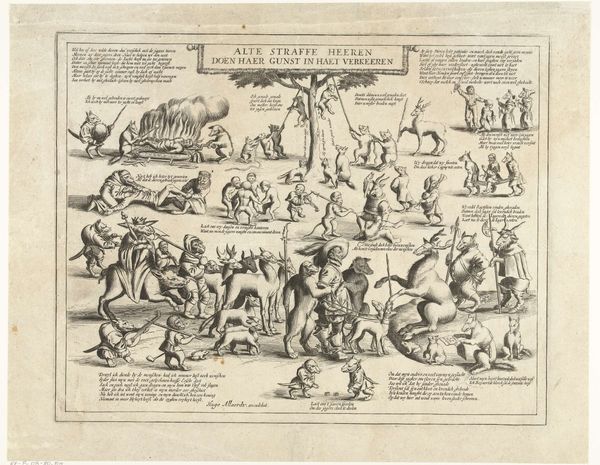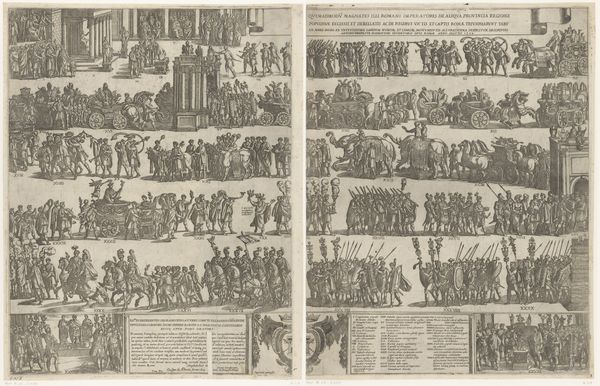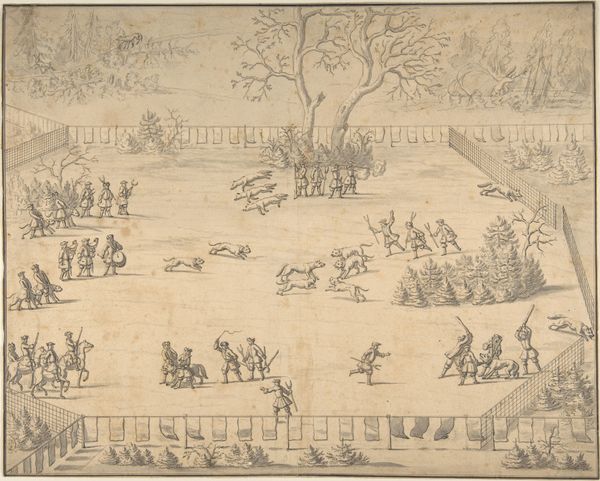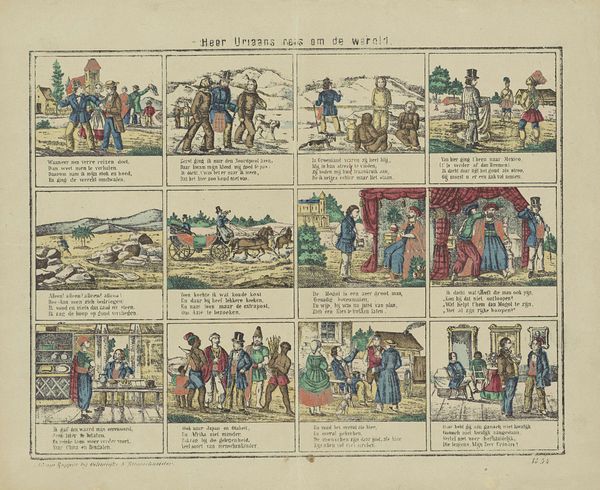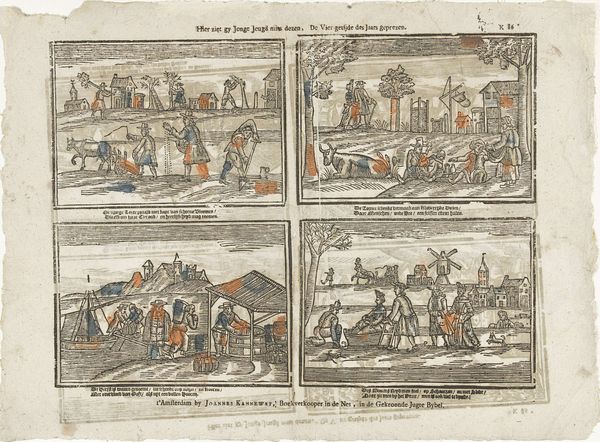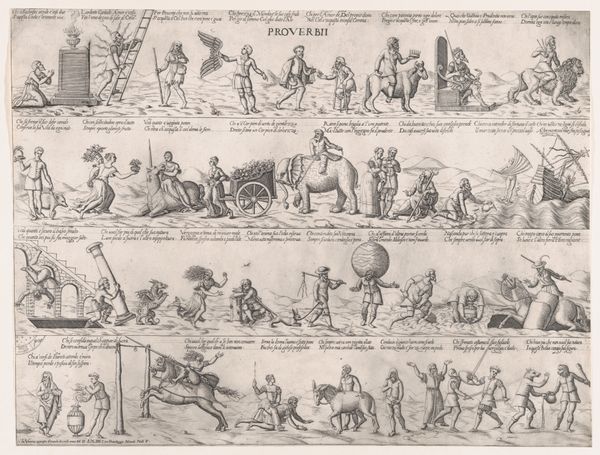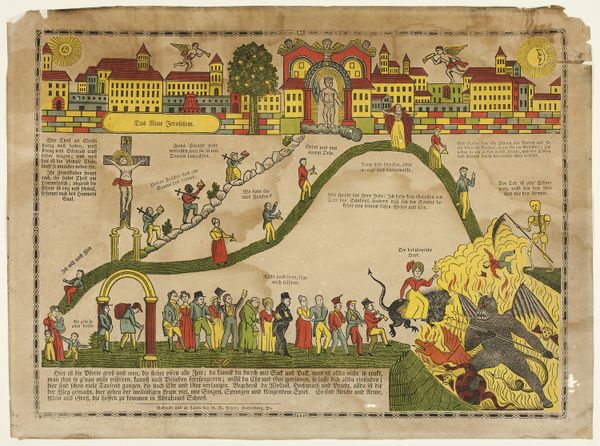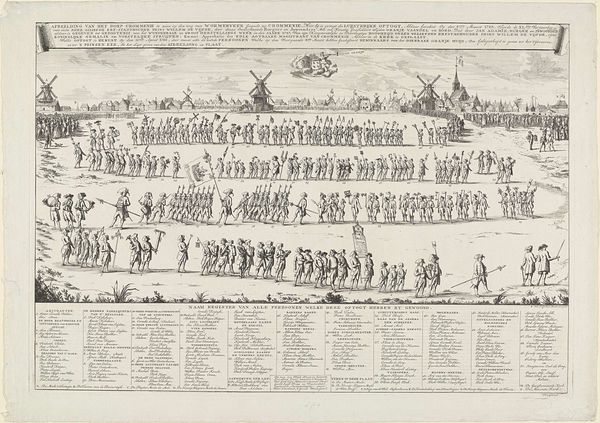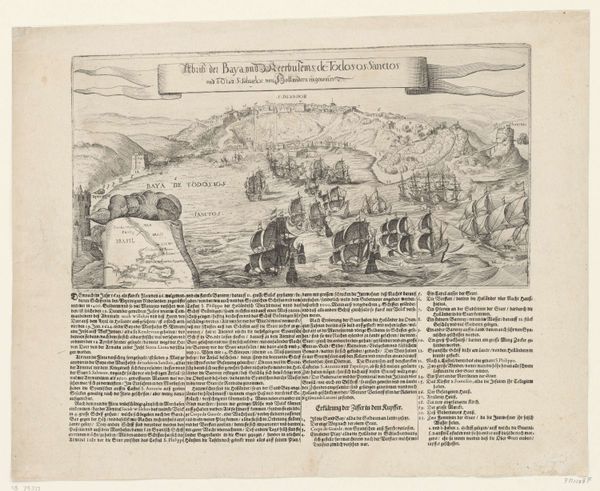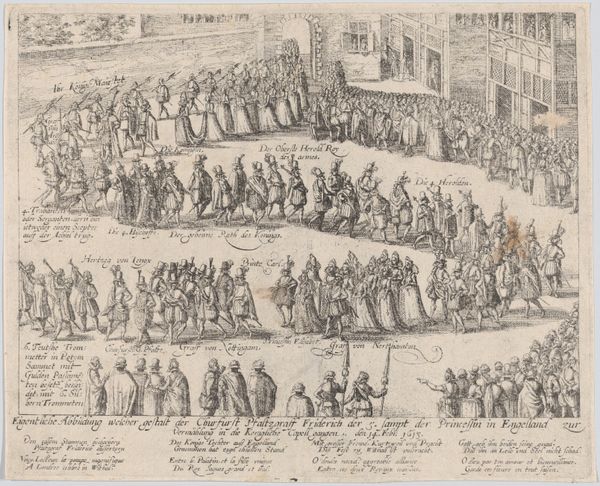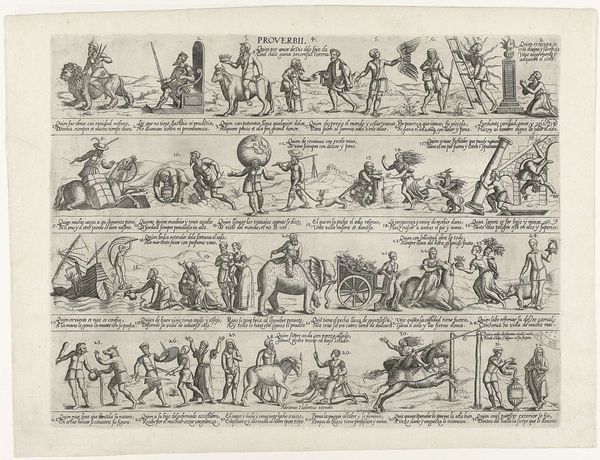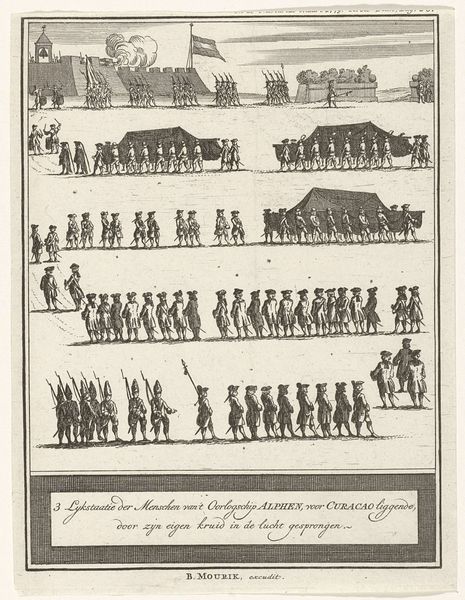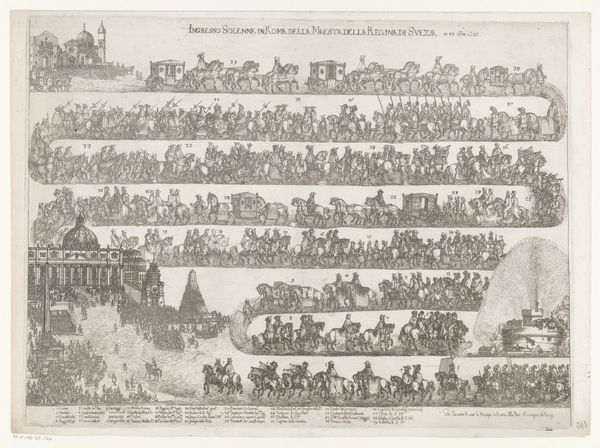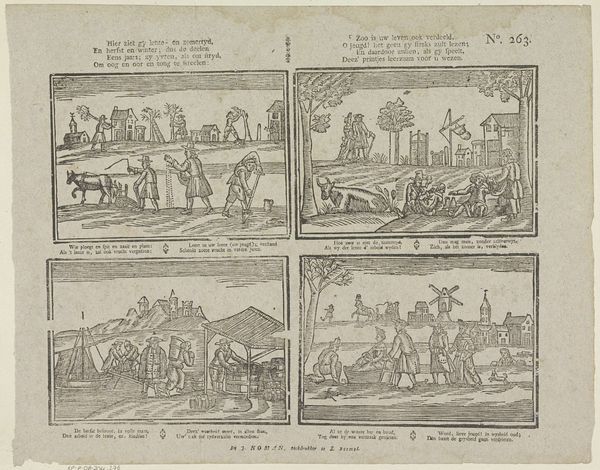
print, etching, woodcut, engraving
#
baroque
# print
#
etching
#
woodcut
#
genre-painting
#
history-painting
#
engraving
Dimensions: height 302 mm, width 352 mm
Copyright: Rijks Museum: Open Domain
Editor: Here we have “Various Games for Children,” a 17th-century print of engraving, etching and woodcut, housed at the Rijksmuseum, created by an anonymous artist. It depicts a cluster of children playing different games. There’s something charming about the chaos of it all, a real snapshot of daily life. What stories can we find hidden within this playground scene? Curator: This image is teeming with cultural memory! It's more than just kids playing; it's a catalogue of pastimes, each carrying its own weight of tradition and social meaning. See how each game, like the hobby horse or kite flying, reflects specific social strata and expectations? Consider, too, the image as a whole: the act of play as a vital space for social and psychological development. Does the overall composition echo broader social dynamics? Editor: I hadn’t considered the social classes reflected in the games. But it's curious how even in leisure, societal structures are so evident. The text around the image, does that reveal more about the meaning of these games? Curator: Exactly. Look closer at the rhymes, and how each highlights the specific qualities, and desired outcomes. They subtly instruct on proper behavior and social roles. For example, are there connections between these games and rites of passage or stages of psychological development? Think about how these connect with shared societal anxieties and aspirations! Editor: That's fascinating! I now see this isn't simply a scene of children playing; it is also an intriguing window into the cultural values and social expectations of the time. Curator: Precisely. We can see how deeply cultural memory is embedded even in what seems like the most frivolous of activities. Understanding these visual symbols unlocks a rich history.
Comments
No comments
Be the first to comment and join the conversation on the ultimate creative platform.
